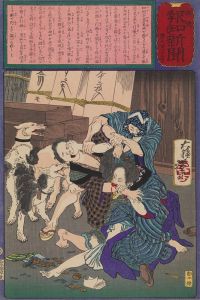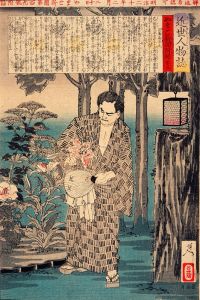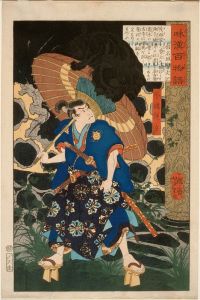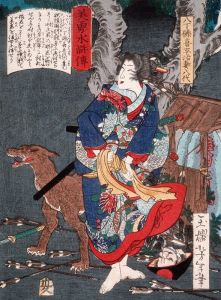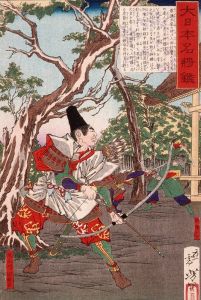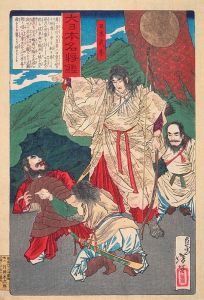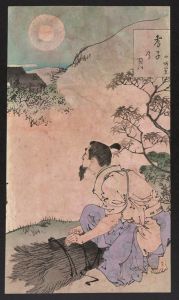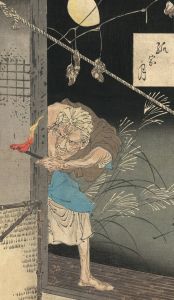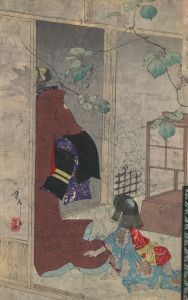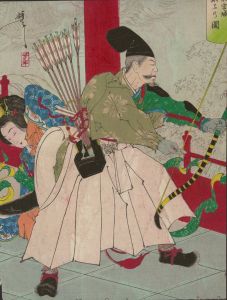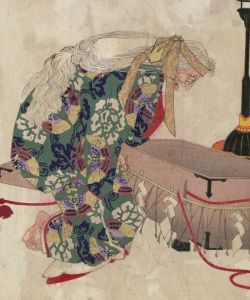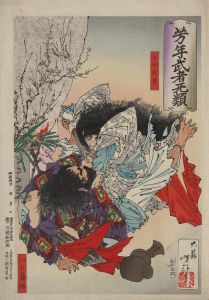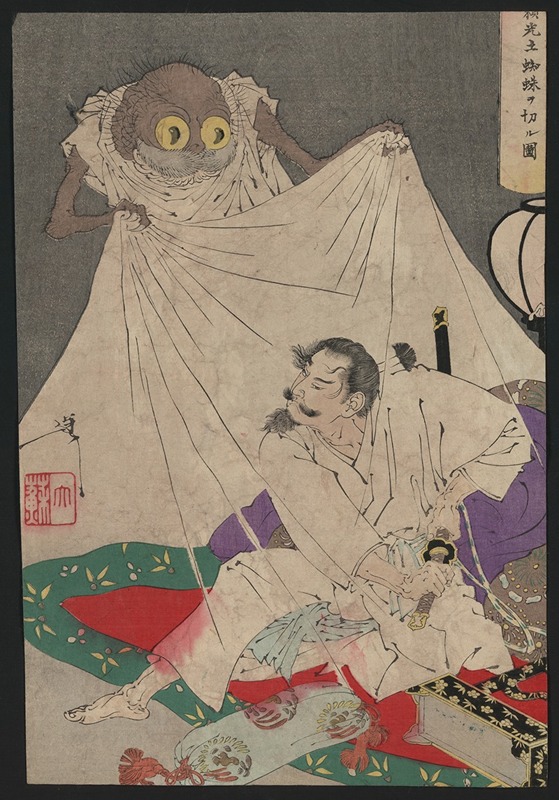
Tsuchigumo
A hand-painted replica of Tsukioka Yoshitoshi’s masterpiece Tsuchigumo, meticulously crafted by professional artists to capture the true essence of the original. Each piece is created with museum-quality canvas and rare mineral pigments, carefully painted by experienced artists with delicate brushstrokes and rich, layered colors to perfectly recreate the texture of the original artwork. Unlike machine-printed reproductions, this hand-painted version brings the painting to life, infused with the artist’s emotions and skill in every stroke. Whether for personal collection or home decoration, it instantly elevates the artistic atmosphere of any space.
Tsuchigumo by Tsukioka Yoshitoshi is a notable woodblock print from the late Edo period, created by the renowned Japanese artist Tsukioka Yoshitoshi (1839–1892). Yoshitoshi is celebrated for his innovative approach to ukiyo-e, a genre of Japanese art that flourished from the 17th through 19th centuries, known for its woodblock prints and paintings. His works often depicted historical scenes, kabuki actors, beautiful women, and supernatural themes, reflecting the cultural and social changes of his time.
The print "Tsuchigumo" is part of Yoshitoshi's series "Shinkei Sanjurokkaisen" (New Forms of Thirty-Six Ghosts), which he worked on during the late 1880s. This series is one of Yoshitoshi's most famous and is acclaimed for its vivid portrayal of supernatural and ghostly themes, drawing inspiration from Japanese folklore, literature, and kabuki theater. "Tsuchigumo" specifically refers to a mythical creature from Japanese folklore, often translated as "Earth Spider." The creature is depicted in various stories as a monstrous spider or a shape-shifting entity that can take human form.
In the context of Yoshitoshi's work, "Tsuchigumo" is likely inspired by the Noh play "Tsuchigumo," which tells the story of a warrior who encounters and defeats a giant spider demon. This tale is part of a broader tradition of Japanese folklore that features yokai, or supernatural creatures, which were popular subjects in Edo-period art and literature. Yoshitoshi's depiction of such themes reflects the Meiji-era fascination with the supernatural and the past, as Japan underwent rapid modernization and cultural shifts.
Yoshitoshi's "Tsuchigumo" is characterized by his distinctive style, which combines traditional ukiyo-e techniques with a more dynamic and expressive approach. His use of color, line, and composition in this print exemplifies his ability to convey drama and emotion, capturing the viewer's imagination. The print likely features a dramatic scene involving the confrontation between the warrior and the spider demon, showcasing Yoshitoshi's skill in rendering movement and tension.
Tsukioka Yoshitoshi's work, including "Tsuchigumo," is significant not only for its artistic merit but also for its cultural and historical value. His prints provide insight into the transitional period of Japanese art as it moved from the Edo period into the modern era. Yoshitoshi's ability to blend traditional themes with contemporary techniques has earned him a lasting legacy in the world of Japanese art.
Today, Yoshitoshi's prints, including "Tsuchigumo," are highly regarded by collectors and scholars. They are studied for their artistic innovation and their role in the evolution of Japanese printmaking. His works are preserved in various museums and collections worldwide, where they continue to be appreciated for their beauty and historical significance.






